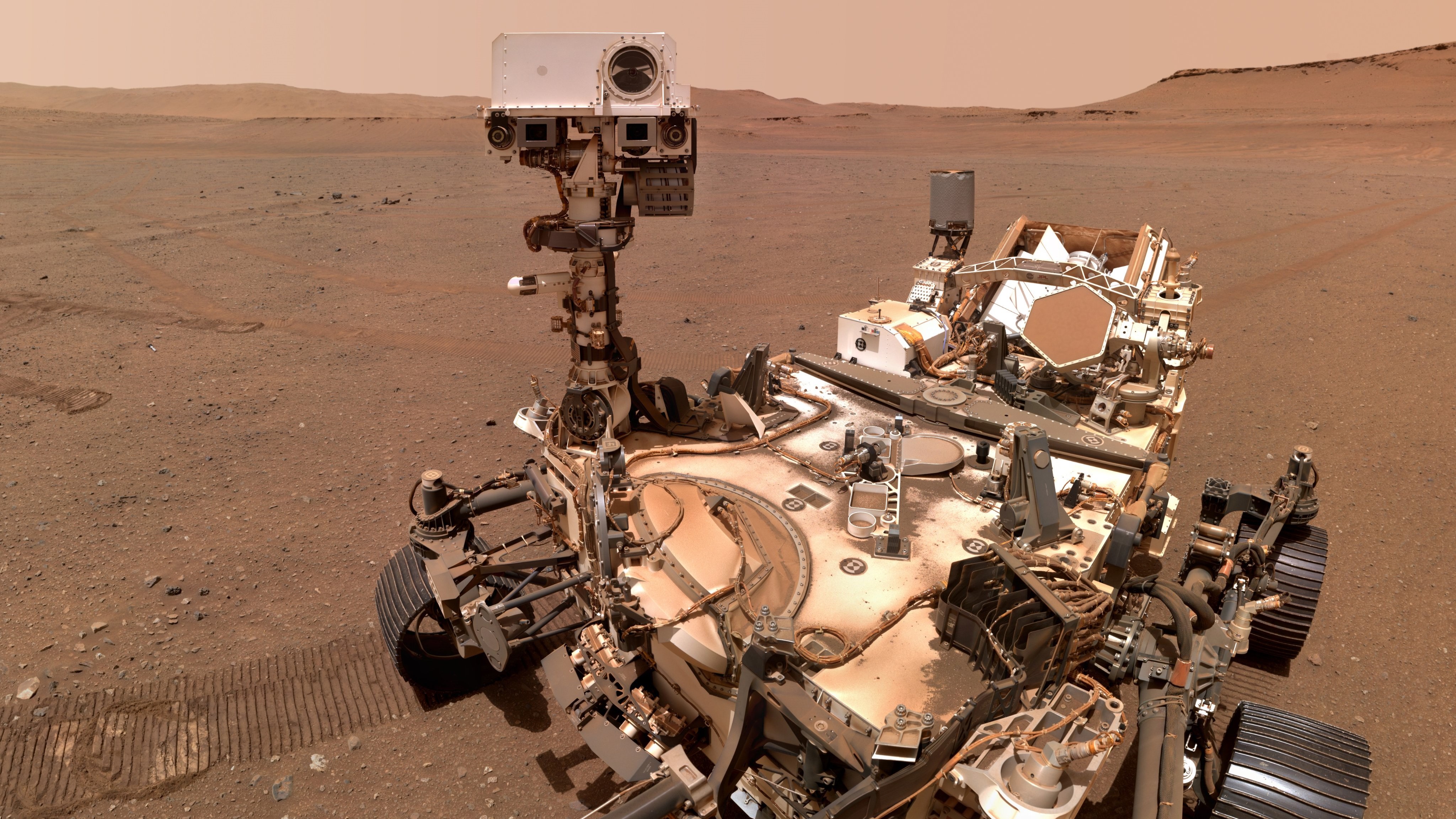In a 1st, NASA's Perseverance rover makes breathable oxygen on Mars
NASA's Perseverance rover has generated 4.3 ounces of breathable oxygen while on the Red Planet — enough to sustain an adult human for three hours.

In a first-of-its-kind experiment, NASA's Perseverance rover has produced enough oxygen on Mars to keep an astronaut alive for three hours.
The rover, which first touched down on Mars in February 2021, produced the element using its Mars Oxygen In-Situ Resource Utilization Experiment (MOXIE) device — which generated the oxygen by converting carbon dioxide in periodic bouts over two years.
Since arriving on the Red Planet, the microwave-size device has generated 4.3 ounces (122 grams) of oxygen, according to NASA. This is equivalent to what a small dog breathes in 10 hours and gives scientists hope that human life could, one day, be sustained on the inhospitable planet.
"We're proud to have supported a breakthrough technology like MOXIE that could turn local resources into useful products for future exploration missions," Trudy Kortes, director of technology demonstrations, Space Technology Mission Directorate (STMD) at NASA Headquarters in Washington, said in a statement. "By proving this technology in real-world conditions, we've come one step closer to a future in which astronauts 'live off the land' on the Red Planet."
Carbon dioxide is abundant on Mars, making up 95% of its thin atmosphere, according to NASA. By zapping small amounts of carbon dioxide over 16 experiments, the MOXIE device stripped oxygen atoms from CO2 and analyzed them for purity before sequestering them safely within a capsule. The leftovers were then emitted in the form of carbon monoxide.
The scientists say that oxygen extraction devices won't just be useful for future colonists to breathe but for making rocket fuel too.
Get the world’s most fascinating discoveries delivered straight to your inbox.
"MOXIE's impressive performance shows that it is feasible to extract oxygen from Mars' atmosphere — oxygen that could help supply breathable air or rocket propellant to future astronauts," Pamela Melroy, NASA's deputy administrator, said in the statement. "Developing technologies that let us use resources on the Moon and Mars is critical to build a long-term lunar presence, create a robust lunar economy, and allow us to support an initial human exploration campaign to Mars."
Despite this small but significant step, many profound health challenges still stand in the way of a viable Mars colony. For starters, Mars is so cold that its average temperature of around minus 80 degrees Fahrenheit (minus 62 degrees Celsius) would freeze a human to death without a space suit, and its low atmospheric pressure would simultaneously boil their blood. This is without taking into account the bombardment of cancer-causing radiation from the lack of a protective ozone layer and the extreme losses to bone-density brought on by the journey there.
Until these problems are overcome, humanity's closest view of the Red Planet is still from rovers such as Perseverance. As a key part of NASA's $2.7 billion Mars 2020 mission, the robot, alongside the Curiosity rover, is searching for signs of ancient life on Mars' surface by collecting dozens of rock samples for eventual return to Earth. The rover is accompanied by the Ingenuity helicopter, which has so far made 57 flights over the Martian surface.

Ben Turner is a U.K. based writer and editor at Live Science. He covers physics and astronomy, tech and climate change. He graduated from University College London with a degree in particle physics before training as a journalist. When he's not writing, Ben enjoys reading literature, playing the guitar and embarrassing himself with chess.


